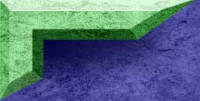5) How has the professional development from this graduate program
added to your professional growth, leadership in your educational setting, participation in local and global learning communities,
and self-renewal as an educator, researcher, and collaborator?
The professional development from this graduate program has guided me through self reflection, exposed me to new and
exciting opportunities in my educational career, and facilitated my professionalism as an educator. I have enhanced my teaching
techniques using more efficient methods of teaching and assessing students.
As a continuous participant in the educational technology world not only have I offered my students technological enrichment opportunities I have also
participated in peer technology training. I look forward to taking time to share with my colleagues all of the benefits
that I have discovered in the world of technology. Just as Holmes and Gardner stated (2006) the 'river and pipe' analogy
is a great example I like to use explaining communal constructivism; like a river enriching the soils by adding nutrients
as it passes by (pg 86). I have become a stronger team leader and technology team member; I am better equipped to assist other
teachers and pass my knowledge on as I become more proficient with technology.
Essential educational materials and guidelines have been posted to my website during the twelve years that I have been an educator. The courses in this Educational Technology masters program have been
an enlightening experience; as I review the Common Core of Teaching I am reminded of my passion for teaching and the importance of the lives we touch.
The resources available on the Internet have opened up possibilities of live data, current science information, accomodation for students, and collaboration potential. As I created a unit on Long
Island Sound I connected with educators, engineers, and employees of the state who were willing to supply me with information necessary for the unit. I have been able to pass on my
new discoveries with my cooperating science teachers and students. I enjoy helping others as I function as the
team leader and cooperating science teacher, I utilize this new knowledge daily.
I have become enlightened to curriculum across our nation as well as world wide through the use of the e-pals global
learning community. Epals was introduced to me through the Educational Technology
program and was well received by administrators, students, and parents at my school. Please refer to Appendix G for
an example of global learning. I am looking forward to utilizing this online learning community to its fullest extent.
My research on constructivism throughout the Edu courses is also an example of knowledge
I have benefited from through the professional growth in this graduate program. For example Bailey and Pransky’s (2005) article on “other people
children” really caught my eye! This article on the cultural impacts of the progressive use of constructivism and how to make this theory an effective Universal theory. The explanation of
Bridging is helpful as I prepare to teach in my multicultural class room.
Bailey and Pransky (2005) thoughtfully explain the goals of
this article: “(a) encouraging educators to understand that learning processes coincide with cultural practices. (b)
encourage educators using universal practices, to also “know “ the cultural roots of this thereof, (c) encourage
educators to create more equitable classrooms. “ …our own cultural beliefs about learning are not the norm for
all students in our classrooms”. Each year I find in my classroom that I must get to know the children in order to provide
the best opportunities for them!
I have noticed and reflected often
about that very cultural conflict the “quiet” child in my classroom, language barriers, or socioeconomic differences.
Why can our curriculum, with such a diverse population NOT adapt to the client (student) we have? I have adapted my teaching
in many ways in order to bridg the gap. Some of the methods I may use are: to include small groups to better meet this students
needs, supply multi-level research for students, or alternate assessments. A teacher should not require the student
to change, the teacher should diversify?
In
order for constructivist process to be effective, the students need to be comfortable. As Bailey and Pransky’s (2005)
article states “The expected student behaviors inherent in that traditional
Japanese learning context bear little resemblance to, and sometime contradict , what educators in the US “know”
as best practices.” Good teachers must get to know each student and how to reach them at their current level of understanding.
Excellent teachers who understand
the culture of their students, is this not necessary to teach true constructivism? Edu 570 capstone seminar provided an excellent
venue for collaborative discussion on getting to know our students and learning styles. The ability to learn from peers was
an opportunity I appreciated and took to heart.

